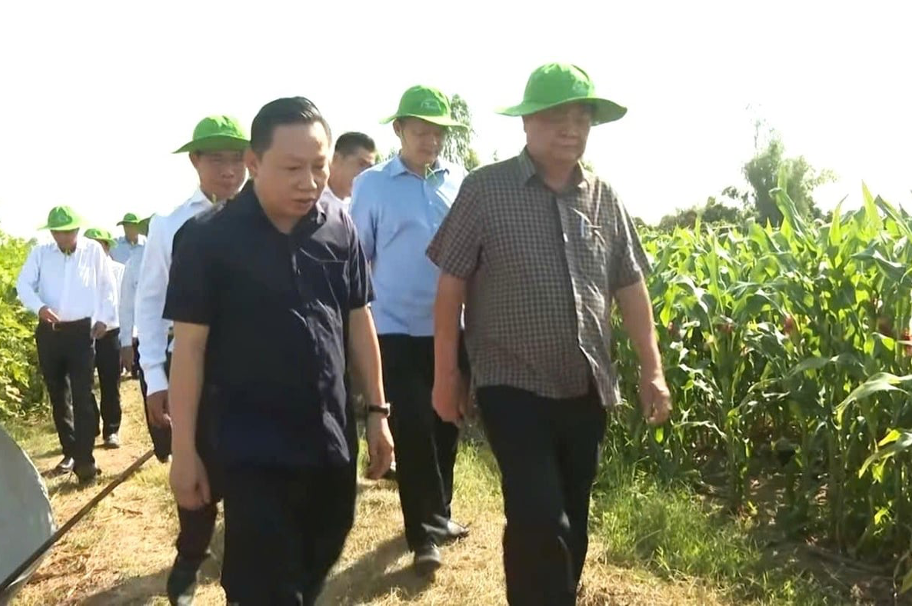During a recent field visit to Antesco’s farming areas in An Giang province, Deputy National Assembly Chairman Le Minh Hoan proposed developing a model of “symbiotic agriculture” — where businesses and farmers share value within a modern, sustainable production ecosystem.
On July 13, Mr. Hoan led a working delegation to survey the linked farming zones of An Giang Fruit and Vegetable Food Joint Stock Company (Antesco) in Long Kiến commune. The visit aimed to explore the company’s cooperation model with local farmers and suggest new directions for agricultural development in the province.
Since 2021, Antesco has built a closed-loop value chain from production to processing and export. The company now partners with farmers across more than 10,000 hectares in An Giang. Its support extends beyond product off-take to providing seeds, inputs, technical guidance, and full traceability — forming a sustainable and inclusive agricultural ecosystem.
 Deputy National Assembly Chairman Le Minh Hoan (front right) leads a delegation to visit Antesco’s raw material linkage zone in Long Kiến commune, An Giang province.
Deputy National Assembly Chairman Le Minh Hoan (front right) leads a delegation to visit Antesco’s raw material linkage zone in Long Kiến commune, An Giang province.At the working session, Mr. Hoan emphasized that this represents a blueprint for “symbiotic agriculture” — a model where businesses and farmers collaborate and share benefits, rather than operating in isolation. He called for broader adoption of this model to enhance the competitiveness and added value of Vietnamese agricultural products.
Following the field survey, the delegation visited the Mỹ An processing plant — one of four facilities operated by Antesco. With modern production lines, cold storage infrastructure, and digital traceability systems, the company now exports around 180 containers of processed goods each month to over 40 countries and territories, including demanding markets such as the EU, the U.S., and Japan.
Mr. Hoan praised Antesco’s transformation from a post-war fruit and vegetable cooperative into one of Vietnam’s leading agro-processing and export enterprises. He also cited Politburo Resolutions 57 and 68, highlighting the critical roles of innovation, technology, and the private sector in restructuring Vietnam’s agricultural economy.
For An Giang province, Mr. Hoan urged authorities to define agricultural development strategies based on ecological subzones, in line with local culture and natural conditions. He also encouraged investment in high-tech agriculture and the development of circular farming systems — reducing waste, optimizing resources, and protecting the environment — as part of a broader sustainable development goal.